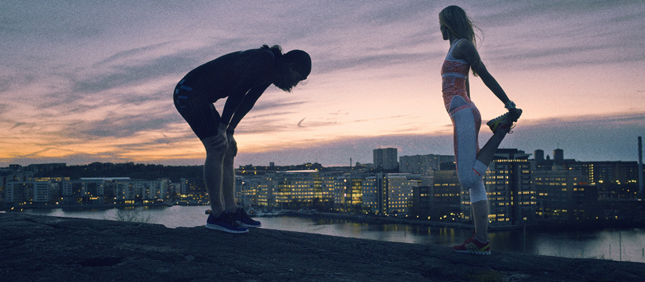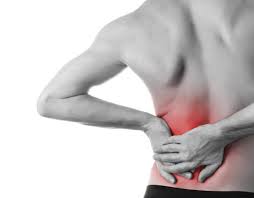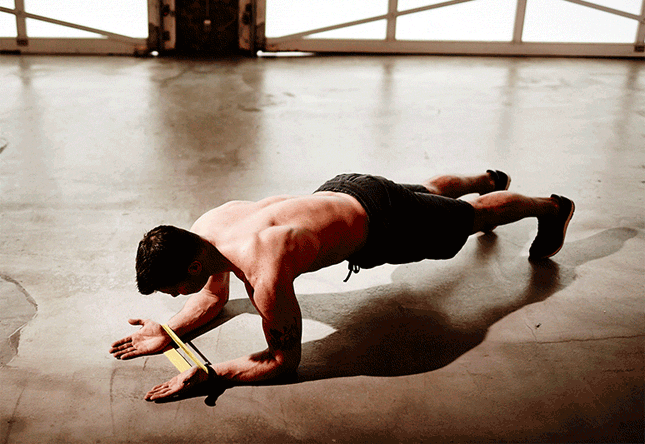Master trainer Josh Stolz shows you how focusing on forgotten areas unlocks a fitter physique.
Monday, January 19, 2015 | Sheila Monaghan
The fittest bodies pay attention to detail. Their routines don’t eschew necessary work with a myopic fixation on their next quantifiable goal. So if you’re setting out to train smarter in 2015, you must make room for mobility work. In fact, for holistic, total-body fitness, mobility is just as important as all of the other facets of your regimen, says New York City-based master trainer Josh Stolz.
“Let’s start with ankle mobility—your foot and ankle contain a relatively large percentage of bones in a relatively small area,” says Stolz, “so if there’s something that’s not moving correctly, it’s going to affect the rest of your body. More specifically, your foot creates internal rotation up into your hip, which lengthens the glute and allows you to propel forward. So if you’re lacking mobility in your arch and foot, you’re going to limit the movement up the chain, and that’s when your body gets out of balance and overworks certain areas.”
Stolz’s approach to mobility training breaks down to three phases: Melt, mold, and move. For each phase, he employs specific tools, too. How he explains it:
Melt: “I’m going to melt the connective tissue – basically roll it, massage it, and reduce the adhesions. This smooths out and helps hydrate the tissue.”
The Tools: ROLL Recovery R8, VYPER vibrating roller, Supernova
How They Help: The R8 may resemble a recycled Rollerblade, but it’s much more hardcore. “This tool allows you to move the tissue in multiple directions—I can rotate, I can add friction—and I can increase or decrease the pressure.” The VYPER vibrating roller is another gadget garnering serious buzz. “Vibration is being researched, but it is purported to increase range of motion and bone density. You can use different settings, too: 1 would be for recovery, post-workout, and 2 and 3 would be a faster movement better suited for pre-workout.” The Supernova is like a lacrosse ball for masochists, but Stolz likes it because of the notches, which allow you to create changes by manipulating your skin.
Mold: This phase furthers the hydration; Stolz favors the analogy of a sponge: “If I drop a sponge in water, it soaks up a certain amount of water. But if I squeeze the sponge, it pulls in more fluid, which, in terms of your body, hydrates tissue and also pulls in nutrients and oxygen.”
The Tool: Voodoo Bands
How It Helps: These bands, Stolz explains, offer an extremely easy way to increase range in motion—you can grip and pull, press, compress, and elongate tissue. They also help recycle and pull in fluid, oxygenate the tissue, and reduce pain by increasing the amount of nutrients coming into a specific area.
Move: “This is to stabilize the mobility you just obtained. In the Melt and Mold phases, you’ve increased range of motion and added more freedom of movement. Now, with Move, you want to be able to stabilize that extra range of motion to reduce injury risk.”
The Tool: Monster Bands
How It Helps: You’re likely familiar with this standard, but it’s incredibly useful for creating joint capsule flexilibilty, says Stolz. “Sometimes the joint capsule gets stuck, and that’s the root of the movement problem. But since you can’t stretch or foam roll in there, you need a way to manipulate.”
Stolz begins this three-part series with an ankle mobility workout, which he demonstrates in this slideshow. “These moves can be done as a set,” he says. “And it doesn’t hurt to do them every day.” For this workout’s Melt phase, Stolz recommends choosing one or two of the moves to start. And make sure you don’t rush. “When you’re rolling, think of covering one inch at a time for a minute or so,” says Stolz. “A regeneration day should be slow.”
Photographed by Mike Rosenthal; Gromming by Marina Gravini; Art Direction + Styled by Ashley Martin

R8 Ankle Mobility
Kneel, resting your left knee on a foam mat or yoga block, keeping your right knee bent 90 degrees. Using the R8 roller, slowly roll the length of your calf. This is best done in one-inch intervals, alternating directions (roll up and down, rotate and roll diagonally, and so on). Switch legs and repeat.

Sit with legs extended in front of you, palms flat on the floor. Place the VYPER above your right Achilles, then lift yourself slightly off the ground, resting your left ankle on your right. Slowly roll the VYPER from your Achilles to your calf; again, rolling in one-inch increments is best. Switch legs and repeat.

Retinaculum Ankle Mobility
On all fours, hands under shoulders and knees under hips, place the Supernova directly beneath the spot where your shin connects to your foot. Resting your leg there, slowly flex your toes up and down for one minute. Move the Supernova slightly up your leg and repeat. Add some circles of the foot in both directions. Switch legs and repeat.

Band-Assisted Ankle Mobility
Sit with legs extended in front of you, your left knee bent and left foot flat, palms flat on the floor. Secure the end of band around something solid, like the base of a machine, and loop around ankle and top of your right foot. Lift and rest your right calf on the handle of a kettlebell. Slowly flex your foot for one minute. Switch legs and repeat.

3D Flossing
Place a heavy weight plate on the ground in front of your feet (or use a slant board). Tightly wrap a Voodoo Floss band around your right calf and rest your right forefoot on the weight plate. Hinging from the waist, use both hands to wring or twist your calf as you lunge slightly forward until your knee is above your toes. Continue for one minute, moving up and down your calf. Quickly unwrap the band and repeat on opposite leg. Your leg should be wrapped for no longer than 90 seconds.

3D Band-Assisted Ankle Mobility
Place a heavy weight plate on the ground. Secure one end of a band to something sturdy, like a cable column or a machine, and wrap the other end around your right ankle. Step your left foot fully onto the weight plate, and rest your right forefoot on the weight’s edge. Hinge from the waist, holding onto something for support like an weight bench or 24-inch plyo box, and lunge slightly forward until your left knee is above your left toes. This movement should be in all planes of motion, so be sure to move forward and back, but also from side to side and in rotation in both directions. Continue for one minute and then switch legs.

Isotonic Weight Transfer
Prior to doing this move, perform an isometric contraction or hold in this position. Focus on driving the ball of the back foot into the ground with as much force as possible without moving the foot; these contractions should be held for about 5 seconds and repeated 2-3 times on each foot. Then, stand in a split stance, left leg forward, right leg back, keeping a slight bend in your knees. With a slight bounce in your step, lunge slightly forward to come up onto your right toes without lifting them off the ground, and back. This should be a very controlled movement. Repeat for one minute. Switch legs and repeat.

Dynamic Force Absorption
Stand in a split stance, left leg forward, right leg back, keeping a slight bend in your knees. With a slight bounce in your step, and without leaving this position, lunge slightly forward onto your left toes and then back, transferring your body weight between legs. Repeat for one minute and then switch legs.
For original post please see: http://q.equinox.com/articles/2015/01/ankle-mobility
Like this:
Like Loading...




























 Grade 2
Grade 2 Grade 3
Grade 3